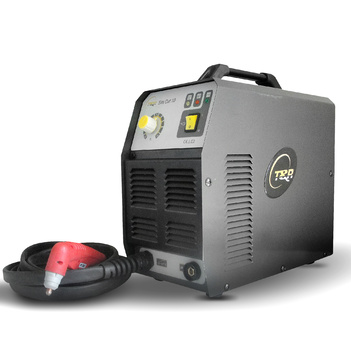Plasma cutters are powerful tools that you can rely on to do a lot of jobs. They’re often the best way to get a high-quality, professional finish on a variety of materials. Projects that may seem difficult or even impossible at first could be handled with relative ease by the plasma cutter, as it operates easily to cut through many different types of metal and other materials.
How does a plasma cutter work?
A plasma cutter is a power tool. It uses electricity and compressed gas or air to make a channel through electrically conductive material utilizing an electric arc. This tool does not cut in the traditional sense of the word, but it does melt and heat metal, allowing for a clean break that is free of any burrs.

Just about anything made out of solid metal can be quickly and simply cut using a plasma cutter with built in air compressor. It doesn’t matter what kind of metal it is or its thickness; plasma cutter for sale can handle the job. Even if you have several different types of metals in one project, a lincoln plasma cutter can cut through all of them to give you the finished product.
There are some other materials that the plasma cutter may not be able to handle. These materials include those with a higher thickness than the plasma cutter can handle along with those which are extremely heat-sensitive and may be damaged by the use of such a tool as the plasma cutter. However, these types of materials are rare, and there is usually an alternative way around this for whatever you need to accomplish.
How many parts are there in a plasma cutter?
The components that make up a plasma cutter are quite simple. The main one is the torch itself, with a nozzle and a small compressed gas tank usually attached to it. There’s also a trigger, so you can turn the machine on and off as needed with your free hand, but this isn’t always included in smaller models or certain types of commercial cutters. Some cutters include a small computer screen that shows you its status.
Yes, it’s important to remember that plasma cutters are still just tools and therefore subject to wear and tear like any other tool. You shouldn’t expect them to last forever if you use them frequently or without taking proper care of the machine. It is extremely common for these machines to be destroyed by either human error or improper care. Your plasma cutter should be used with caution and you should always double check any precautions and procedures before using it. You should also ensure that your plasma cutter is still in good working condition before use, as a broken machine could hurt you and those around you.
Who can use a plasma cutter?
Plasma cutters can do a tremendous amount of jobs, and they’re relatively easy to use, but only if you know-how. Otherwise, you could end up with a ruined project or even injure yourself in the process. The best way to learn is from somebody who already knows what they’re doing, so it’s always advised to have an experienced individual by your side at first. If you go about it the right way, a plasma cutter can be a very powerful tool.
As long as you pay attention to what you’re doing and follow all of the safety procedures, your plasma cutter should do its job without even getting in the way. It’s quite easy to use and anybody can master it with just a little bit of practice. Again, it’s not recommended for you to try using one until you’ve gotten some training first. That way, your experience with the plasma cutter will be as safe and effective as possible.
The Bottom Line
To conclude, a plasma cutter is a powerful tool that does a lot of different types of jobs. It works on a variety of materials and it’s simple enough to use that anyone can pick it up with some practice. It can also be dangerous if you don’t know what you’re doing or if the machine isn’t in good condition. However, a plasma cutter is a great addition to any toolbox.

As the editor of the blog, She curate insightful content that sparks curiosity and fosters learning. With a passion for storytelling and a keen eye for detail, she strive to bring diverse perspectives and engaging narratives to readers, ensuring every piece informs, inspires, and enriches.









